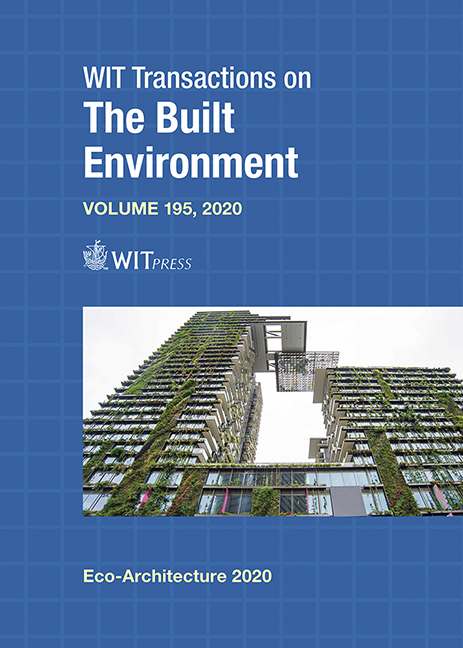DEVELOPING A PEDAGOGICAL MODEL FOR BIOPHILIC DESIGN: AN INTEGRATIVE CONJECTURE MAPPING AND ACTION RESEARCH APPROACH
Price
Free (open access)
Transaction
Volume
195
Pages
14
Page Range
57 - 70
Published
2020
Paper DOI
10.2495/ARC200051
Copyright
WIT Press
Author(s)
NIRANJIKA WIJESOORIYA, ARIANNA BRAMBILLA, LINA MARKAUSKAITE
Abstract
Environmentally sustainable design (ESD) was developed as a response to the increasing demands to address sustainability challenges within built environment (BE). BE stakeholders have already adopted ESD as a critical principle in their practices and it is crucial to embed ESD in preparing the next generation of BE professionals. In industry, various ESD frameworks have been developed and adopted to measure the success of design in terms of achieving sustainability. Similar frameworks have been used extensively to guide and scaffold learning for sustainable design in design studios. These frameworks offer predetermined sets of criteria to measure quantifiable building performance parameters. However, there have been growing concerns that the ESD frameworks do not help enhance human–nature connectedness (HNC), where attention was given to biophilic design (BD) to bridge this gap. Availability of few BD frameworks limits the opportunities to adopt them in ESD studios. Further, current BD frameworks focus on qualitative place-making aspects of building designs with less emphasis on quantifiable building performance. This is the critical challenge in teaching BD in ESD studios where the ESD frameworks are used as a central pedagogical tool to guide students’ self-assessment, reflection and learning. This chapter reports on an educational design and research study that involved a systematic development of a pedagogical model for incorporating BD in ESD studios. We present here our conceptual and methodological work done as a part of this study consisting two steps. Firstly, we developed a general approach for designing and testing pedagogical innovations in ESD studios by combining educational design-based research and action research approaches. Secondly, we applied this general approach to creating a pedagogical model for teaching students to develop and use BD frameworks. The proposed general approach can be adopted in ESD studios for designing and testing other pedagogical innovations for ESD.
Keywords
environmentally sustainable design, biophilic design, architectural design studio, professional education, conjecture mapping, evaluative judgement





